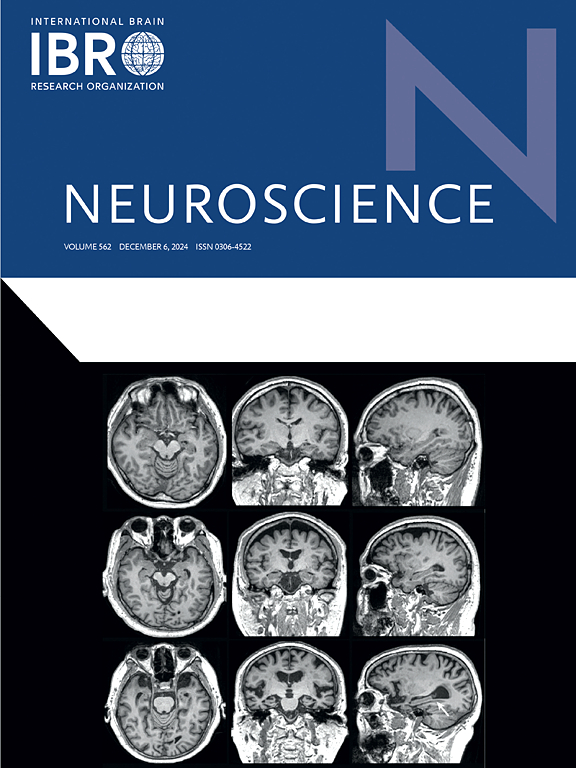侧缰核参与甲基苯丙胺戒断诱导的焦虑样行为的处理
IF 2.9
3区 医学
Q2 NEUROSCIENCES
引用次数: 0
摘要
在甲基苯丙胺(冰毒)戒断期间常见的焦虑障碍是导致复发的重要负强化因素。侧缰(LHb)作为负强化中心,但其在甲基苯丙胺戒断引起的焦虑中的作用尚不清楚。本研究结合c-Fos免疫荧光和化学遗传学方法,采用开放场试验(OFT)和升高+迷宫(EPM)评估甲基甲醚戒除雄性小鼠的焦虑样行为。我们的研究结果表明,戒断冰毒的小鼠表现出焦虑样行为,并伴有LHb神经元的激活。此外,抑制冰毒戒断小鼠LHb神经元活动可减轻焦虑样行为。在正常小鼠(naïve)中,LHb的激活也会诱导焦虑样行为,这突出了LHb活性稳态在情绪调节中的重要性。综上所述,我们的研究结果为LHb在冰毒戒断引起的焦虑中的作用提供了证据,表明维持LHb活性的稳态对于预防与焦虑相关的适应不良行为至关重要。本文章由计算机程序翻译,如有差异,请以英文原文为准。

Involvement of the lateral habenula in the processing of methamphetamine withdrawal-induced anxiety-like behaviors
Anxiety disorders, commonly observed during methamphetamine (METH) withdrawal, are important negative reinforcement factors that contribute to relapse. The lateral habenula (LHb) serves as a negative reinforcement center, however its role in METH withdrawal-induced anxiety remains unclear. Here, we used the open field test (OFT) and elevated plus maze (EPM) to assess anxiety-like behaviors in METH-withdrawn male mice, combined with c-Fos immunofluorescence and chemogenetics approach. Our results showed that METH-withdrawn mice exhibited anxiety-like behaviors, along with activation of LHb neurons. Furthermore, suppressing LHb neurons activity in METH-withdrawn mice alleviated the anxiety-like behaviors. In normal (naïve) mice, activation of LHb also induced anxiety-like behaviors, highlighting the importance of LHb activity homeostasis in emotional regulation. Taken together, our findings provide evidence for the role of LHb in METH withdrawal-induced anxiety, demonstrating that maintaining the homeostasis of LHb activity is crucial for preventing maladaptive behaviors associated with anxiety.
求助全文
通过发布文献求助,成功后即可免费获取论文全文。
去求助
来源期刊

Neuroscience
医学-神经科学
CiteScore
6.20
自引率
0.00%
发文量
394
审稿时长
52 days
期刊介绍:
Neuroscience publishes papers describing the results of original research on any aspect of the scientific study of the nervous system. Any paper, however short, will be considered for publication provided that it reports significant, new and carefully confirmed findings with full experimental details.
 求助内容:
求助内容: 应助结果提醒方式:
应助结果提醒方式:


